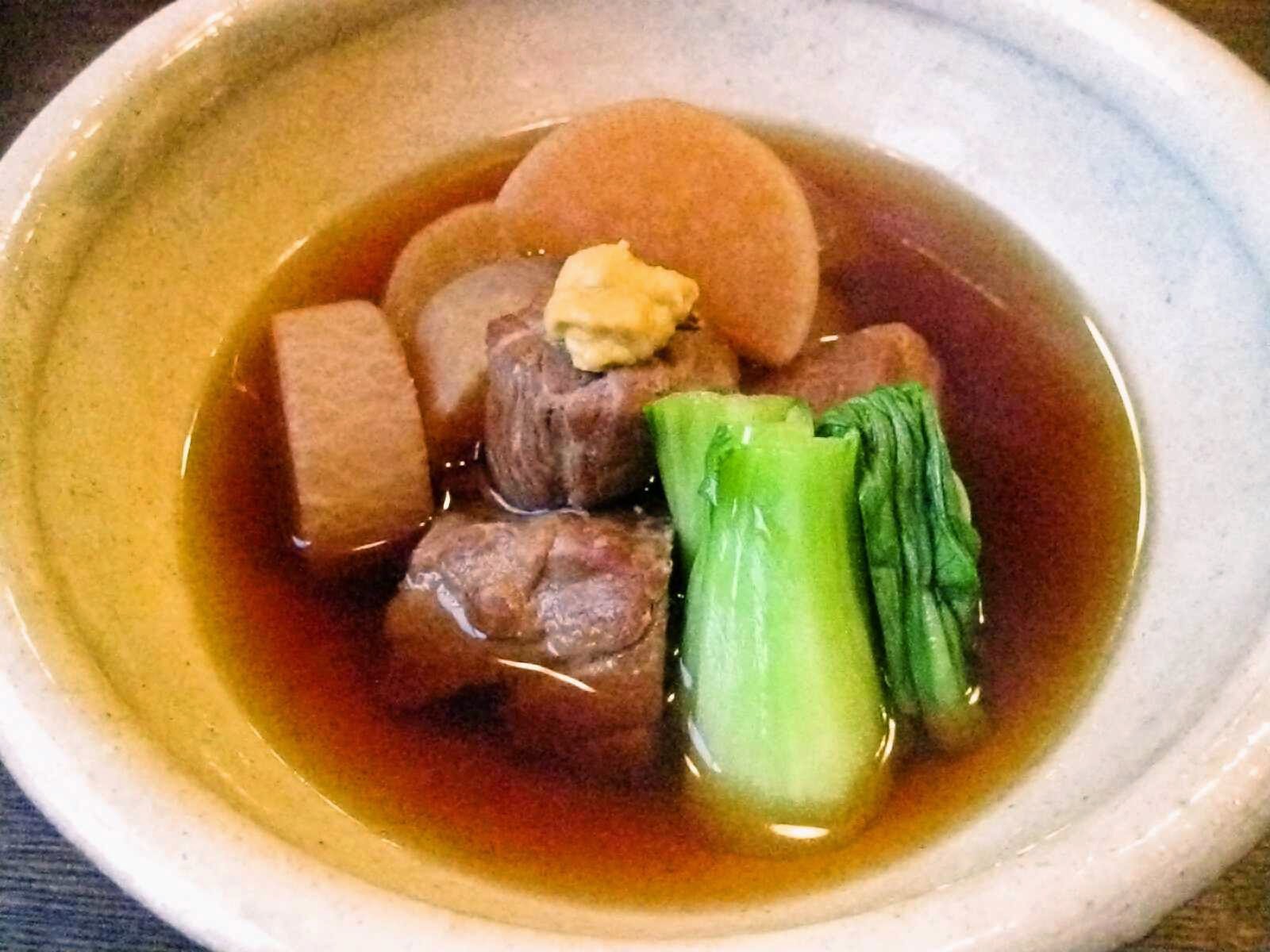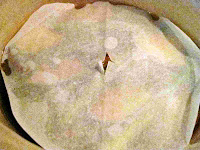<Ingredients>
Small handful (50-100 g) okara soybean pulp (80g in photo)
8 cm daikon radish
2 green onions (green sections)
1 small knob ginger
1 tbsp oil (not in photo)
For broth
250 cc water
2 tbsp sake
1 tbsp mirin
1 tbsp soy sauce
1 tsp brown sugar
1 tsp honey
<Directions>
1.
In a frying pan, heat oil, and sear all surfaces of pork.
Pat off oil and fat on pork with paper towel.
Put pork in a pot, add water to cover, add okara, put otoshibuta drop cover (parchment paper cut to fit in photo) directly on top, and simmer on low heat for 2 hours (at least 1 hour).
Liquid with okara tends to overflow when boiling on higher heat; watch the temperature.
2.
In the meantime, cut daikon in half-moon shape, and trim edges.
Simmer with several dozen rice grains until soft.
Rinse, and put in a separate pot with water for the broth.
3.
When pork is tender (a skewer smoothly goes in fatty part), prepare a separate pot with enough water to cover pork, and bring to boil.
When water boils, transfer pork to boiling water, and cook for 1 minute.
Gently shake pork while immersed in hot water to get rid of any okara on surface.
4.
Cut pork into 3-4 cm.
Cut green onion as necessary to fit in pot.
Slice ginger (peeling skin is unnecessary).
5.
In the pot with daikon and water, add pork, green onions and all other ingredients for the broth, except soy sauce.
Add only 1/2 of the specified amount of soy sauce here.
Bring to boil, reduce to medium low, and simmer 20-30 minutes.
6.
Add the remaining soy sauce and ginger, place otoshibuta drop cover, and cook another 10 minutes.
7.
Remove green onions and ginger, and serve with karashi mustard and blanched green vegetable (optional; chigensai baby bok choy in photo).
<Notes>
- If okara is not available, rice bran and rice grains are said to work as substitutes, just as with prep-boiling daikon radish. Would ground garbanzo beans work, too? (I’ve not yet tested.)
- With this recipe, do not cut off fatty part of pork in the preparation stage. Okara works amazingly well to take away fat, leaving a soft, jelly-like texture that is not greasy.
- If honey is not available, substitute an equal amount (1 tsp) of maple syrup or 1 tbsp brown sugar.
- Otoshibuta is a cover that is directly placed on ingredients to ensure liquid covers all ingredient surfaces.
- Keeps in the fridge for a few days.
- Other commonly added ingredients are hard-boiled eggs, which go better with strongly flavored kakuni.






















No comments:
Post a Comment